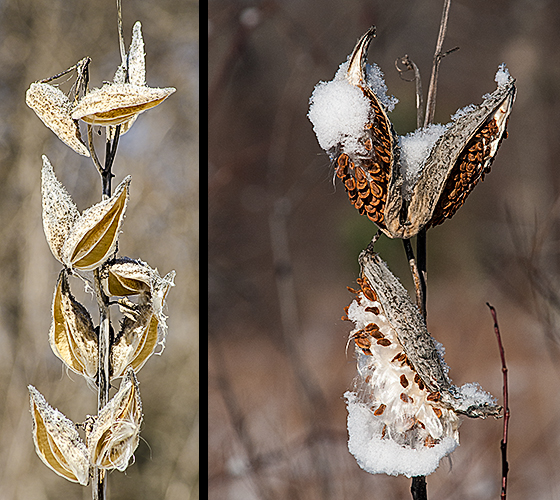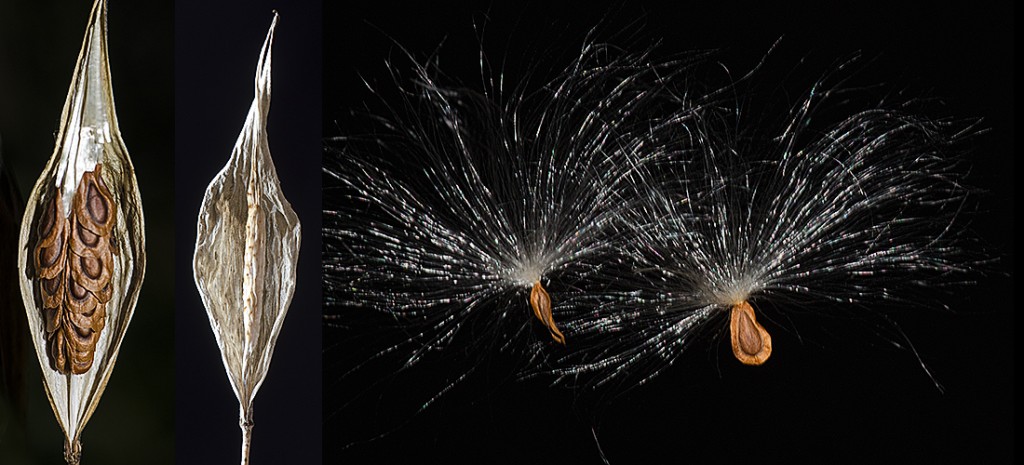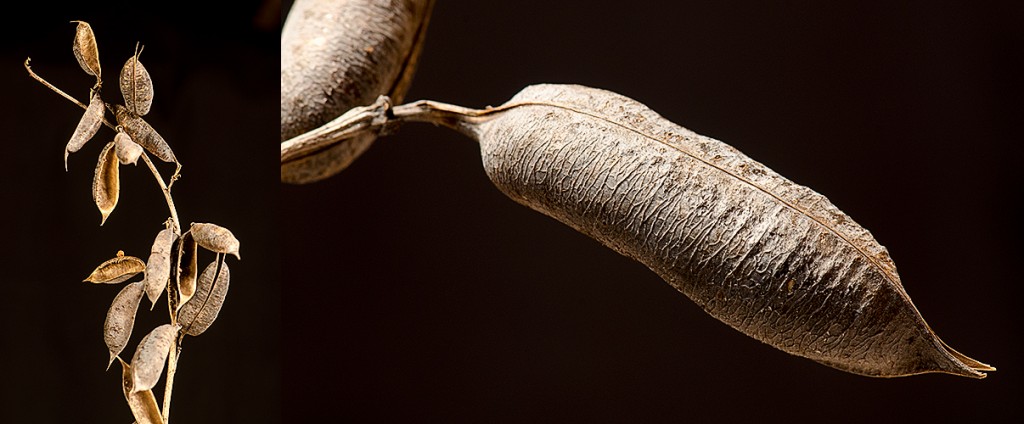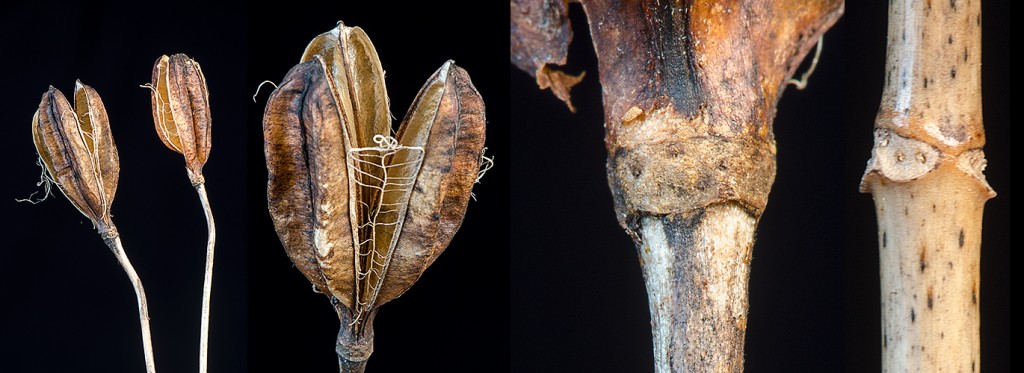Learning to identify wildflowers from their seedpods is a rewarding bit of detective work. I am happy when I can tell the genus of a particular plant. Whether it is a Milkweed, Goldenrod, Iris, etc. is enough for me. Sometimes when I find a strange seedpod the only way I can figure out what it is, is by returning to the spot during the flowering season and seeing what species are growing there.
Two outstanding books that help to identify winter wildflowers are Winter Wildflowers by Helen V. Smith and Weeds in Winter by Lauren Brown. Smith’s book is currently out of print but Brown’s book with her superb line drawings and a workable identification key has been reprinted under the title Weeds and Wildflowers in Winter.
When I see a winter wildflower the first thing I notice is the growth habit of the plant. Is it short or tall, erect or creeping, how many flowers did it have? Then I examine the plant, are there scars where the flower petals attached? Do dried leaves or their scars remain on the plant? Can you determine if the leaves are opposite, whorled, or alternate (look for leaf scars)? Does the plant have seedpods, heads of seeds, or seeds in long groups? What is the shape of the seedpod, long, pointed, peapod-like, wide, narrow? How many sections does it have? Do any of the flower parts remain? Look at the shape of the seed head. Is it a ball, elongated, pointed? Are the seeds fuzzy, barbed, sticky, smooth? What is the habitat, wet, dry, sunny, woods, fields, dunes?
Here are some of the southeast Michigan winter wildflowers with large pods. By large I mean longer then 25mm [one inch] and a diameter greater than 6mm (1/4 inch).
Milkweeds (Asclepias spp.) have elongated follicles, seedpods that split along a single line. Follicles can be smooth or warty depending on the species. Seeds are sometimes present into the winter and each seed is comose meaning it possesses a tuft of hair which allows it to float on the breeze.
Wild Indigo (Baptisia spp.) is a prairie plant that is now being used in native gardens. It is a many-stemmed plant with multiple pods per stem. Diane Ackerman in her wonderful essay collection Dawn Light accurately describes “the indigo’s fat seedpods, each one a plump lady’s leg with a seamed stocking.” Cleanly splitting in half, the plants drop seeds that are at times visible on the snow covered ground.
Rose Mallow (Hibiscus spp.) has five-parted seedpods that are hairy on the inside and rough sepals are characters for this plant. It normally grows in wet areas and is about 1m (3 feet) tall. Southern Michigan is at the north edge of its range.
Iris (Iris spp.) has a three-parted seedpod that is often subtended by a pair of dried bracts. It is found in wet places and is .3-.5m (12-18 inches) tall.
Lily (Lilium spp.) seedpods resemble Iris seedpods but they have petal-scars under the pod and never have dried bracts. Lilies grow in both wet and dry habitats. Michigan Lily (Lilium michiganense) is the species in the photograph. The flowers nod but the seedpods straighten as they develop and the mature pods point skyward.
Copyright 2015 by Donald Drife
Webpage Michigan Nature Guy
Follow MichiganNatureGuy on Facebook







This is another really useful guide to winter wildflower ID:
A Guide to Wildflowers in Winter. Herbaceous Plants of Northeastern North America. Carol Levine. And if you want some examples for “wintergreen” plants, and a few color images, check out: Season Of Promise: Wild Plants In Winter, Northeastern U.S. by[June Carver.
Thanks Ron, I will have to check these books out.